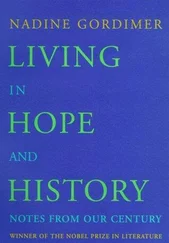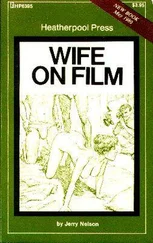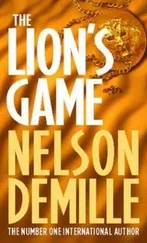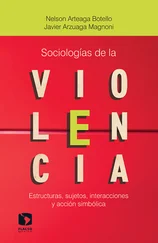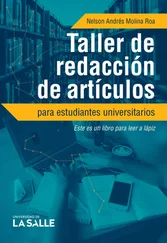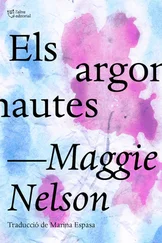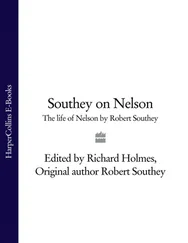Gabriel’s email address was Vincent’s only mention of the Carreras in his notes. Could Vincent have written to him threatening to expose some dirty secrets that would destroy Bayside Research?
Of course! That had to be it! Men with Gabriel’s wealth and power didn’t need to kill in order to get women; they only murdered when their money was at risk. That’s probably why they had invited her to the island—to assess just how much she knew. Her fleeing the scene before they had a chance to interrogate her probably confirmed their suspicions. They had murdered her husband, and now they’d be after her.
She struggled to control a rising anger. She had to focus—the interrogation was not over. Her chest tightened as she forced herself to ask the next question: Why did she make love to Gabriel Carrera, her husband’s murderer? She looked down at her baggy T-shirt and shorts; she was still wearing his clothes. Her eyes watered. She dabbed at the moisture with a knuckle and asked herself: Why the tears? Was it anger? Humiliation? Fear?
She probed and prodded the corners of her brain, but the answer remained hidden. Sensing she would be haunted by that question for years to come, she moved on.
As she faced her next demon—anxiety—the questions came at her like clenched fists. Why had Olimpia insisted that she go out to Carrera Island? She turned a heavy-hearted gaze on the woman sleeping next to her. Can I trust you, Olimpia Garza? Or are you leading me into the jaws of the beast?
The taxi stopped in front of the Hotel Ojeda. Olimpia awoke. The next leg in their odyssey began.
Gratefully, Diane turned her face up to the spray and tried to remember when she last bathed. Olimpia was already in her night shirt, and by the sound of it, she had been on the telephone since Diane turned on the shower.
At first, Diane had strained to hear Olimpia’s machinations through the splashing water. Failing that, she resigned herself to whatever lay ahead—at least for the short term. Olimpia had promised a tell-all concerning their destination at their next meal, which would come at about 1 p.m. after a few hours sleep.
In all fairness, Diane admitted to herself that she had not yet disclosed the nature of her distress. She simply told Olimpia she couldn’t talk about it yet, and Olimpia had backed off.
In bringing her here, Olimpia was apparently acting out of trust: In the middle of the night, she had thrown Diane’s things in a backpack and rushed to rescue her from an unnamed assailant. Diane wished she could offer Olimpia that same trust. But, in fact, she couldn’t even trust herself. She feared that Vincent was right when he wrote in his notes: Diane blocks any suggestion of sub rosa activities at BRI. Her zeal for her new job seems to have obliterated her innate people sense.
She lay on her back staring at the ceiling light fixture and listening to the even breathing from the other bed. She sensed that she and Olimpia were not alone there. Was she just delusional from the fatigue?
She rolled on her side and fell asleep.
The towering Sierra Nevada de Santa Marta looked down upon Diane as she stepped from the cab in front of a small hillside restaurant. And for the first time since her arrival in Colombia, she turned and looked up.
She was stunned to see a spectacular mountain range standing at the edge of the Caribbean. Taking in its enormity, she heard a deep-throated wind—a mantra-like sound that poured forth from its lofty heights. She stood there, mesmerized, listening.
From behind her came Olimpia’s voice. “The Sierra Nevada de Santa Marta is the tallest coastal mountain in the world. It is the realm of the Kogi. Tribe members say the mountain speaks to the worthy among them. They say it confers strength of mind and body upon the pure of heart. We are heading up there this afternoon.” She tapped Diane’s arm, breaking her trance. “Come; we must nourish ourselves. The Mountain abhors weakness.”
Over a grilled grouper sandwich, Olimpia told Diane about the ethereal Kogi, the only remaining Colombian tribe that was not conquered by the Spanish in the sixteenth century. The Kogi simply climbed so far up the mountain, the Conquistadors could not reach them. Today, some of their aerial farmlands were still inaccessible except to those with special knowledge of the way up.
Olimpia patted Diane’s arm across the table. “You will be safe there for a while. Then we will make other arrangements.”
She told Diane that to reach the Kogi, they would climb the first three thousand feet of near-vertical jungle in a helicopter. She had made reservations while Diane was showering.
They would land amidst the ancient ruins of Ciudad Perdida, the “Lost City.” The twenty-minute flight would trim three days off a six-day trek and help them avoid some major marijuana and coca growing areas and the armed guerillas that patrolled them.
But first some errands in town.
Juan, the cab driver who picked them up at the restaurant, wore a backwards Mets cap and had an Empire State Building charm dangling from his mirror. As they climbed into the backseat, he greeted Olimpia like a longtime friend: “ Como estan, Dr. Leona .”
“Buenas tardes, Juan.”
Dr. Leona? Diane made eye contact with Olimpia and raised her eyebrows. Olimpia responded with a wink.
Juan assessed Diane approvingly over the seat back. “Soy Juan. Como se llama?”
Olimpia intercepted the question: “ Esta Dr. Florencia.”
Diane took the cue. She was supposed to be Hispanic. No problemmo. She had always been told she had no “Yankee” accent when she spoke Spanish. She smiled and nodded at Juan. “Encantado.”
Juan pulled away from the curb. “La playa?” he asked after checking out their shorts and sandals. They had dressed to blend in with the tourists.
Olimpia assured Juan they had come there to work this time.
‘Si. Ciudad Perdida?” he asked
“Si.”
Arqueologia?”
“Si.”
Diane’s eyebrows jumped again. Olimpia had apparently been masquerading as a Dr. Leona, archeologist, for some time. But why? Another question that would have to wait.
Diane’s only view of Santa Marta came from the backseat of the cab. As they crisscrossed town preparing for their trek, she marveled at ancient edifices standing in elegant contrast with modern buildings.
Discovering this was Diane’s first visit, Juan became the tour guide. He told her Santa Marta was founded in 1525, and it was the oldest surviving colonial city in Colombia.
On the way to the government office to procure a permit for Diane to go up into the Sierra Nevada, a National Park, Juan slowed the cab to point out the beautiful Museo Arqueologico Tayona , a former Spanish Colonial mansion. Three suntanned people emerged from the museum chattering excitedly. Diane watched them wistfully. How she envied their lives.
Permit obtained, they moved on to the market to pick up some light provisions. “The Mountain will provide the rest,” Olimpia said.
Driving away from the market—at Olimpia’s suggestion—Juan took a side trip past the Quinta de San Pedro Alejandrino , where Simon Bolivar spent his last days. He had died in Santa Marta.
Diane mused that she would rather not share that fate with the Great Liberator.
A stop at the Municipal de Police provided Diane, posing as Dr. Florencia, with a permit to visit the Ciudad Perdida, the “Lost City.”
At every stop, “Dr. Leona” was greeted with respect as well as affection. And being a colleague of Dr. Leona, Dr. Florencia—also a renowned archeologist—was accorded like treatment.
Читать дальше

